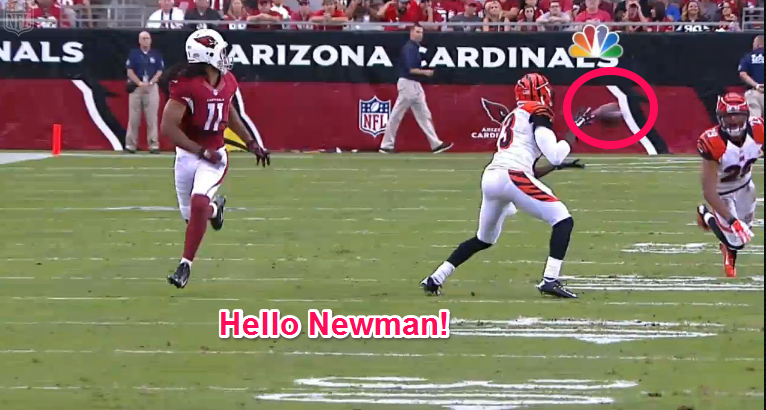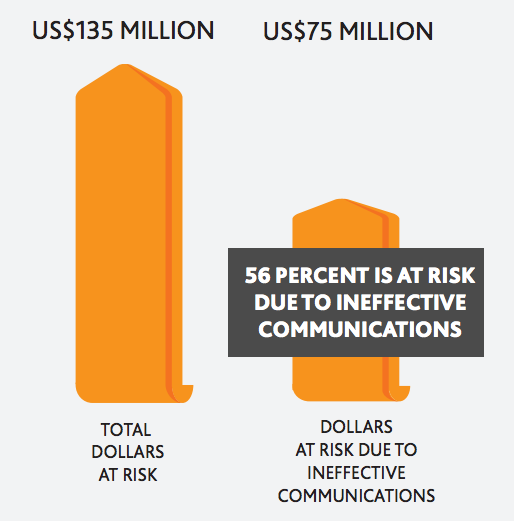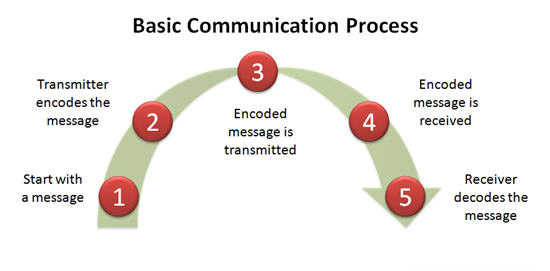Just a heads up…have you downloaded our free PDF on the 10 steps you need to have a successful software implementation?
Click here to download nowOur family moved to the Phoenix area just over two years ago from Salt Lake City, Utah. Me being the sports buff I am, I was very excited to see there were FOUR major sports teams in the area:
Arizona Cardinals – NFL
Phoenix Suns – NBA
Arizona Diamondbacks – MLB
Phoenix Coyotes – NHL
In addition to these four teams listed above, there are also the following professional sports teams (although not as popular):
Phoenix Mercury – WNBA
Arizona Rattlers – Arena Football
Phoenix FC Wolves – United Soccer League (USL)
Since I’m a big fan of supporting local teams, we decided to become Arizona Cardinals season ticket holders (we are entering our second season).
We recently attended preseason game #3 versus the Cincinnati Bengals.
Here we are on the way to the game in the long line of cars waiting to park:
No tailgating in this HOT Arizona heat so we went straight to our seats to enjoy the air conditioned University of Phoenix stadium.
As the game started, the Cardinals offense looked sluggish — they couldn’t get anything going! Carson Palmer, the quarterback for the Cardinals, was off his game and missed connecting with some open receivers. The offense was looking like the Cardinals of the last few years: BORING.
SIDE NOTE: they had a great year last year and would have made the playoffs if it weren’t for the division they play in (NFC West).
Then, about midway through the first quarter Carson Palmer threw a pass intended for wide receiver Larry Fitzgerald. It was intercepted by Terence Newman of the Cincinnati Bengals.
Interception + touchdown = not good for the Cardinals.
Miscommunication? FOR SURE.
On this play Carson thought Larry was going to run a slant toward the middle of the field while Larry thought the route was for him to run straight up the field. Who was right, Larry or Carson?
After the touchdown the crowd moaned in agony as if to say “here we go again” as the Cardinals went on to lose the game 19-13.
Think team communication matters in sports? You bet it does. Does communication matter just as much when it comes to managing a project?
YES.
Had Larry cut to the middle, maybe the pass would have been completed and the Cardinals would continue their drive and maybe they would have scored. But we’ll never know.
The same can be said for projects lacking clear communication. Without clear communication, no one knows where to go or what to do. Interceptions are thrown, balls are fumbled and players are not in position to make a play.
If you manage projects, you know a large part of the project involves communication — up to three fourths of the project time. So yeah, communication is important and one of many keys to a project’s success.
Warning! Analogies ahead:
Not only that, communications is a core competency that when properly executed, connects every member of a project team (football players) to a common set of strategies, goals and actions (the game plan). But unless these components are effectively shared by project leads (football coaches) and understood by stakeholders (football owners and fans), project outcomes (results of the game) are jeopardized and incur unnecessary risk (like throwing the ball to a spot where Larry Fitzgerald was not present).
While football fans are stakeholders of the football team (since they invest money via purchasing season tickets), stakeholders from an organizational point of view are those who have a vested interest in the success of the project (like a VP of a business line or suppliers).
Poor communication can lead to budget overruns and missed revenue.
While it was only a preseason game, do you think the pass play by the Cardinals would affect the potential revenue stream for the organization if the interception prevented them from going to the Super Bowl? The organization would have missed out on a HUGE payday.
Monetary Impact of Poor Project Communication
Until recently, it was not clear how much of an impact ineffective communications has on project outcomes and subsequent business success. But a 2013 report by the PMI (Project Management Institute) revealed US$135 million is at risk for every US$1 billion spent on a project.
Further research showed 56% (US$75 million of the US$135 million) is at risk due to ineffective communications.
While organizations are very aware of how critical effective communications is to the success of strategic project, and, ultimately, organizational success. However, the PMI report indicated only one in four organizations can be described as highly-effective communicators.
Not All Projects Succeed
You may already know this, but not all projects succeed. On average, two in five projects do not meet their original goals and business intent, and one-half of those unsuccessful projects are related to ineffective communications.
How frequently you communicate, the content of your communication and the use of clear and relevant language directly affects the success of projects. In the graph below, project managers who communicated frequently regarding the business benefit, with the use of non-technical language, and sufficient clarity and detail had a greater than 80% chance of a successful project. Not bad, right? I would take those odds all day!
How Do We Know if We Suck at Communicating?
At some point in your career you may have put on your resume: “excellent oral and written communication skills”. I know I did!
But do we really have excellent oral and written communication skills?
If we take a look outward and ask ourselves the following questions honestly, I’ll bet we find some gaps in our communication skills:
- Do you feel everyone agrees with and supports what you say, feel and do most of the time?
- Is there a lack of input, questions, or feedback on your ideas presented in meetings?
- Are there few or no ideas presented in your meetings?
- Do you have the inability to influence others to accept your ideas or change their viewpoint or behavior?
- Are you seeing little or no behavioral change in the people you’ve coached for performance improvement?
- Is there confusion about what is supposed to be done on a project?
- Is there no understanding of the “why” behind the projects or goals you assign?
- Are you nervous or hesitant about presenting new ideas to your boss, client, or strategic partner?
- Is there frequent rework of the tasks you assign?
- Do you have to constantly remind others to take action, meet deadlines or send information? (think about at home too)
If you answered yes to any one of those, your communication skills might be lacking. Truth is: we think are great communicators but we aren’t.
The Basics of Communication
Why do we make communicating with another human so difficult? It ought to be simple right? But it’s not and even I struggle with it.
Let’s have a look at some typical literary definitions of effective communications:
- An exchange of information
- An act or instance of transmitting information
- A verbal or written message
- A technique for expressing ideas effectively
- A process by which meanings are exchanged between individuals through a common system of symbols
Here’s a visual representation of the basic communication process:
The words “encode” and “decode” should not be thought of as 128 SSL encryption nor Morse code. Rather, think about encoding and decoding as deciding what words you will use to communicate.
For example, as the sender you will find words in your vocabulary to best articulate and transfer information from your brain to the receiver’s brain (encoding). These words will then be “decoded” by the receiver and processed by their brain to try and understand the meaning of your message.
Obviously the words you choose must be meet the comprehension level of the receiver. For example, you wouldn’t want to explain quantum physics to a four year old because your encoded message would never be decoded (understood).
Couple the process above with body language and language barriers (for people who’s native language is not English) and it’s easy to see why humans are terrible at communicating with one another.
Which is why it is super important to choose the right language when communicating with others. In my opinion, plain speak is the best when writing emails and project plans but for whatever reason we think we need to sound highly intelligent and use big words to get our point across.
And it doesn’t help that in high school and college we are taught to write formally/professionally but have you noticed when you’re speaking to your friends and family you NEVER talk like that? So why do we write like that?
Recently, I purchased a great copywriting book by Neville Medhora. It’s a quick read with valuable information on how to write better. (You can get it here for $4USD)
In his book he touches on the point of writing with clarity, simplicity and avoiding ambiguous words to confuse and/or bore the reader.
Here’s the excerpt:
“Somewhere along the way we were taught to follow every grammar rule.
But why? The only point of writing is to communicate thoughts to someone (like I am doing now with you)
So if I write: Hey wat r u doin?
Even thought it is not “proper English” you still understand it as much as this text:
Hey, what are you doing?
In fact, the poorly formatted and mis-spelled version got the point across with less effort.
Just keep in mind, “Communication is just transferring information from one brain to another”
…And however we can do that best, should win.”
Notice the word “should”? It’s because some professions require technical and industry specific writing. For example, if you’re a rocket scientist at NASA your probably not allowed to write in a casual tone for your technical documents.
In fact, they even tell you how you will write when working for NASA. Here’s their guidebook for technical writers and editors (includes grammar, punctuation, and capitalization). If you’re absolutely bored out of your gourd, you can read the dry document here.
Then again, at NASA you know who your audience is right? Practically every person there is an engineer. So they speak engineer. Which is point #1 on things you can do to improve your communication skills.
Things You Can Do to Improve Your Communication Skills
- Before you open your mouth or type the first sentence of an email, know who you’re speaking to. Is it the CFO? Is it middle manager? A supplier? A customer? Knowing who you are communicating with sets you up for success each time you write an email, prepare a presentation or make a phone call.
- Know your audience.
- It bears repeating: KNOW YOUR AUDIENCE
- Practice writing.
- To become a better writer guess what you have to do? Write! Set a goal to write more every day (start low with 250 words per day). Keep a daily journal. Write to your grandmother. Just write!
- Write like a 6th grader.
- Unless you work at NASA
- And I know in the corporate world you have to write corporate-y and use lame corporate-y buzzwords like: synergy, streamline, leverage, etc. But do everyone you work with a favor and AVOID using buzzwords. All they do is get in the way of the thought you are trying to communicate. The overuse of buzzwords can give the impression you really don’t know what you’re talking about. And, your audience tends to tune you out after the buzzword has just left your mouth.
- Remember, all we doing is transferring information from one brain to another. Write with enough detail (but not too much) for your recipient to understand the message and write the message as simply as you can and with clarity.
- Practice speaking in front of others
- Speaking in public can be frightening for many. Jerry Seinfeld made famous the line about funerals and public speaking: “According to most studies, people’s number one fear is public speaking. Number two is death. Death is number two. Does that sound right? This means to the average person, if you go to a funeral, you’re better off in the casket than doing the eulogy.”
- Get over your fear of speaking by joining a local toastmasters organization (toastmasters is a nonprofit educational organization that helps people improve their communication, public speaking, and leadership skills). They have clubs all over the world. Go here to find a local club.
- Get out of your office or cubicle
- For the love of Pete, get out of your office!
- Sending an email is a cop out if the person you need to speak to is in the same building. Get out of your chair, walk to that person’s work area and talk. Such a novel idea! And guess what? Your message will probably be understood with more clarity than the email (emails are so often misinterpreted). There is also a bonus for speaking to someone in person: human interaction and the potential to develop a great working relationship.
The Palmer to Fitzgerald Pass [VIDEO]
Alright, at the beginning of this post I mentioned the interception of Palmer’s pass intended for Fitzgerald. Have a look at the video footage below showing the play in real time and slow motion. Who’s responsible for the error? Did Palmer call the play but Fitzgerald did not run the right route? Or did Fitzgerald run the correct route and Palmer was not aware of where he was supposed to be?
FYI, there is audio.
So…what do you think? Here’s the answer according to coach Bruce Arians, Carson Palmer and Larry Fitzgerald from arizonasports.com: According to Cardinals coach Bruce Arians, it wasn’t the quarterback’s fault.
“We had a miscommunication on a route,” Arians said. “The receiver should be breaking across the guy’s face, and he went behind him and it’s a pick-six.” Fitzgerald didn’t disagree with his coach. “I didn’t break across the corner’s face, and I’ve got to do that,” the receiver said. “You never can let your quarterback, you know, hang him out to dry, and so I’ve got to do a better job of reading and recognizing the defense and doing what I’m coached to do.”
Arians said it is the type of issue the team should not be having at this point in the season, but in reality, in roughly a week’s time the interception will be wiped from the record books like it never happened.
“It was just a miscommunication, something that doesn’t typically happen,” Palmer said of the pick. “It’s something that’s come up that’s good because we’ll look at it; we’ll see why that happened and we will move on and get better from it and learn from it. Of course, that does not mean Palmer will not (and has not) been criticized for the play — even though it wasn’t necessarily his fault — with Arians saying that’s just how things are in a quarterback’s world.
“That’s what it is in the quarterback’s world,” Arians said. “It is what it is.”
There you have it. Fitzgerald received the encoded message from Palmer but it looks like he did not accurately decode the message? But why?
Was it the words that were used (the encoding of the message)? Was it the body language? A lack of playbook knowledge? Only Palmer and Fitzgerald know the answer to this question. As a project manager, you are the quarterback.
Right or wrong, you will be the one to take the blame when someone on the team messes up. Just as it is in the quarterback’s world, so it is in the project manager’s world. What about you?
Do you have methods or advice on how to improve communication on a project? Let me know in the comments section, I love to hear different strategies and approaches on how to make the office a better place to spend half of your life.
Don’t forget to download our free PDF showing the 10 steps you need to follow for a successful implementation.
Click here to download now







